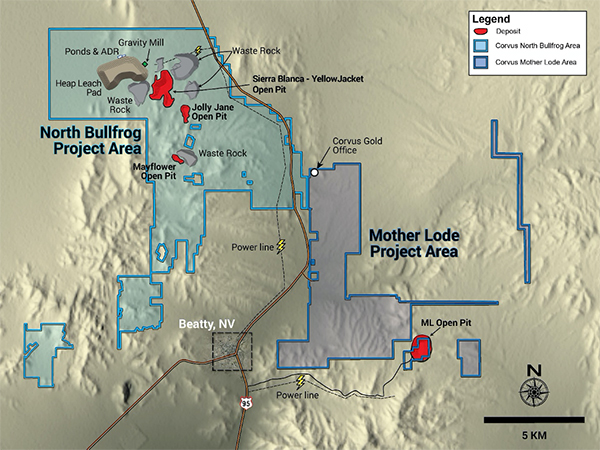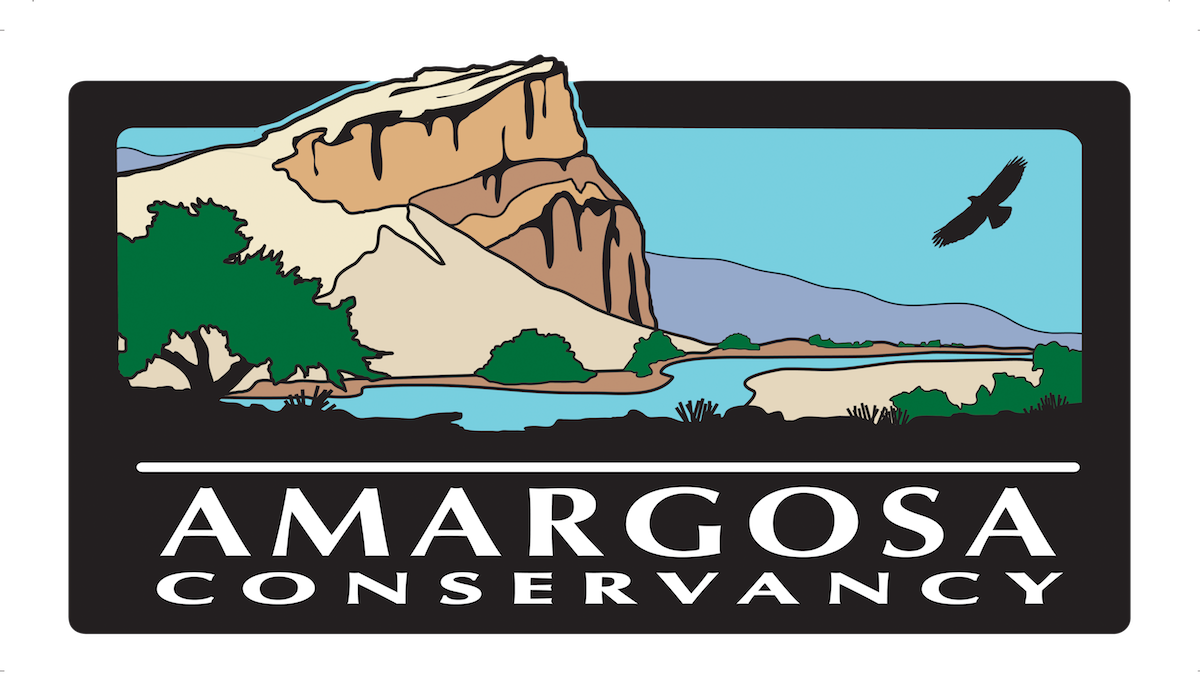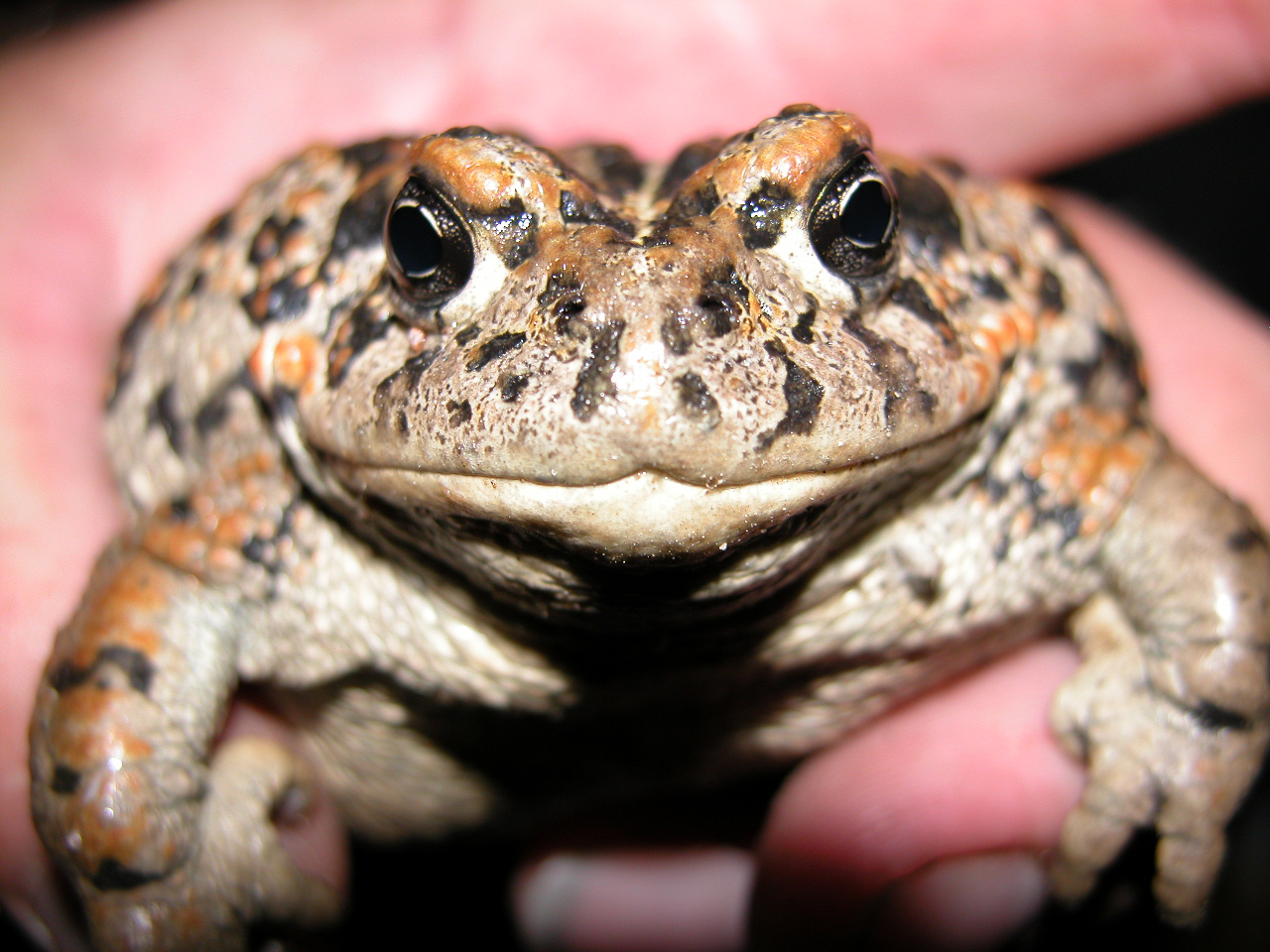Amargosa toad. US Fish and Wildlife photo.
By Patrick Donnelly
North Bullfrog Mine is the first of a half dozen or so gold mines which are under exploration or permitting near the Amargosa River in Beatty, Nevada.
North Bullfrog is owned by AngloGold Ashanti, one of the world’s largest gold mining companies, which is headquartered in South Africa. The proposed mine site is located about nine miles north of the town of Beatty and about three miles west of the Amargosa River. Currently, North Bullfrog Mine is in the beginning stages of the environmental review process under the National Environmental Policy Act (NEPA). It is being reviewed under an Environmental Impact Statement (EIS). Scoping, when members of the public can identify issues which need to be analyzed in the EIS, concluded on May 10, 2024. We are expecting a Draft EIS sometime before the end of 2024.
The proposal includes three open pits: the Sierra Blanca, the Jolly Jane, and the Mayflower. Sierra Blanca and Jolly Jane are both proposed to go below the water table, and will thus require dewatering. Dewatering is when a mining company pumps water out of the aquifer to lower the water table so that open pit mines don’t flood during operation. Maximal dewatering rate will be around 1,300 acre-feet per year, and will propagate a cone of depression well into Oasis Valley, affecting the Amargosa River. An acre-foot is enough water to fill an acre one foot deep, approximately 325,000 gallons.
The mine would use the dewatered water as a part of their ore processing, but will also require additional water, which will be sourced from a wellfield to the north in Sarcobatus Flat. Total water consumption for the project including dewatering will be as much as 2,500 acre-feet per year. Drawdown from pumping and dewatering will extend outward from the mine site for many miles. BLM is only providing the public with a 10-foot drawdown contour – that is, a circle drawn around the mine site where the extent of aquifer drawdown will be 10 feet. Their area of potential impacts to groundwater is being evaluated using the 10-foot contour plus one mile. However, drawdown will propagate for an unknown distance beyond the 10-foot contour – one mile is not a number based on the local hydrogeology, but rather a standard procedure by BLM. As a result, the full area of impacts from groundwater drawdown has not been fully revealed to the public. At a public meeting for the mining project, BLM stated that drawdown would occur in the following amounts: 13 feet of drawdown at Springdale, a ranch which is now owned by AngloGold; 3.3 feet of drawdown at the Amargosa River near Fleur De Lis Road; and one foot of drawdown at Colson Pond, which is on The Nature Conservancy’s Atwood Preserve.

Map courtesy Anglo Gold/Ashanti
There are numerous species endemic to Oasis Valley which could be severely affected by pumping and dewatering for North Bullfrog Mine. These include the Amargosa toad (Anaxyrus nelsoni), the Oasis Valley speckled dace (Rhinichthys nevadensis nevadensis), the Oasis Valley springsnail (Pyrgulopsis micrococcus), and a recently discovered and undescribed species of springsnail in the genus Tryonia. These organisms are all reliant on sustained discharge of groundwater from springs and seeps for survival. How will drawdown, even one foot of drawdown, affect these species?
The mine is also sited in desert tortoise habitat. Beatty, being on the northern edge of the Mojave Desert, is at the very northern extent of the desert tortoise. However, with climate models showing much of the tortoise’s range becoming hotter and drier and possibly incompatible with tortoises’ life history and needs, the northern part of the species’ range is of increasing importance. The tortoise as a whole will eventually need to move northward to adapt to the changing climate, making habitat in Beatty of high importance.
North Bullfrog is the first of many mines which are proposed in Beatty/Oasis Valley. AngloGold has several other projects, including the Expanded Silicon Project, described as one of the largest recent gold discoveries in the world, the Mother Lode project, and the Sterling project. Augusta Gold has two projects, the Bullfrog project and the Reward project. And finally a company called Zacapa Resources has the South Bullfrog project. Cumulative pumping and dewatering from these projects could cause devastation to the Amargosa River.
The Amargosa Conservancy is remaining engaged on these issues and will push back on and projects which will harm the Amargosa River. Stay tuned for more information.
Patrick Donnelly is Vice-President of the Amargosa Conservancy Board of Directors and Great Basin director at Center for Biological Diversity.

